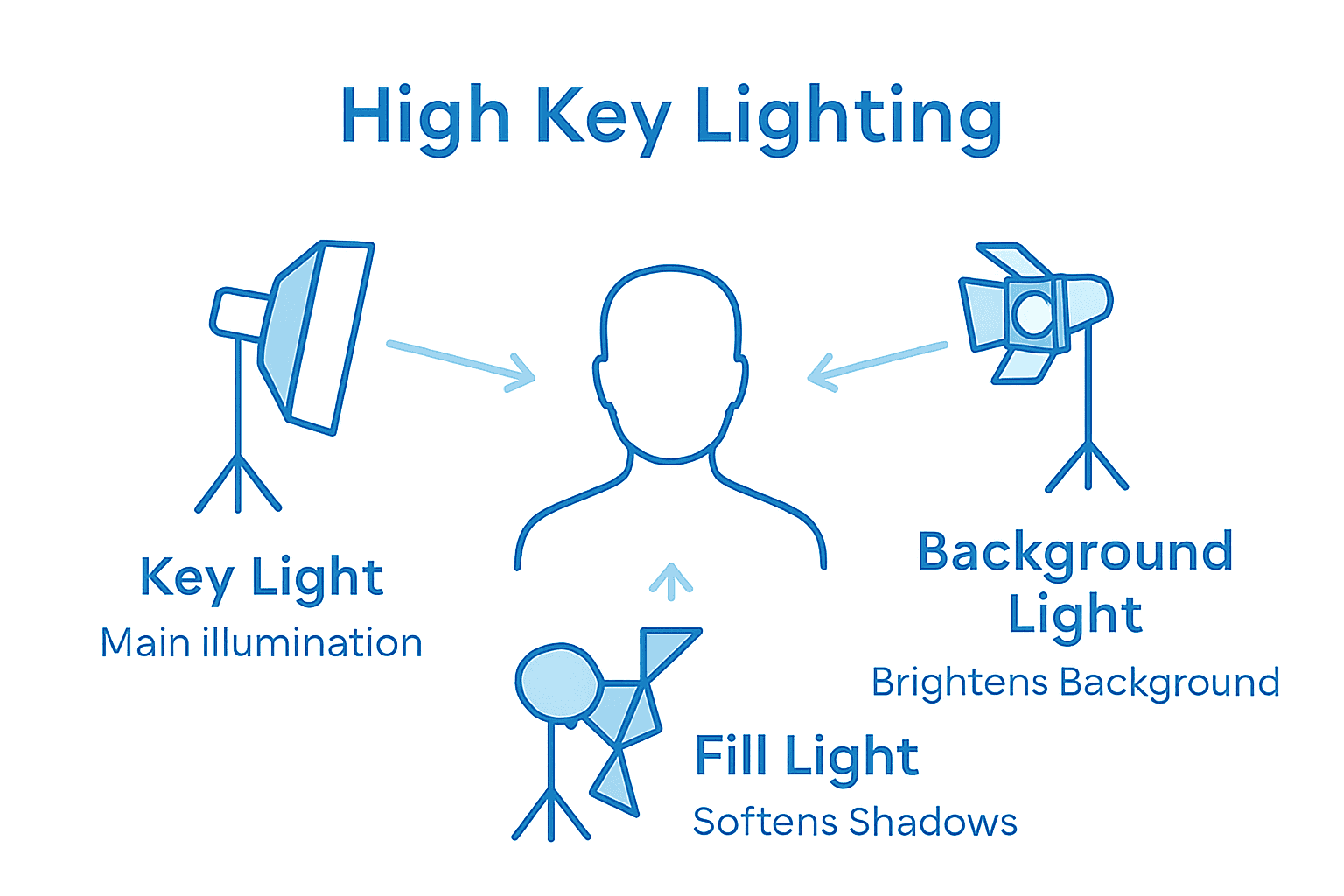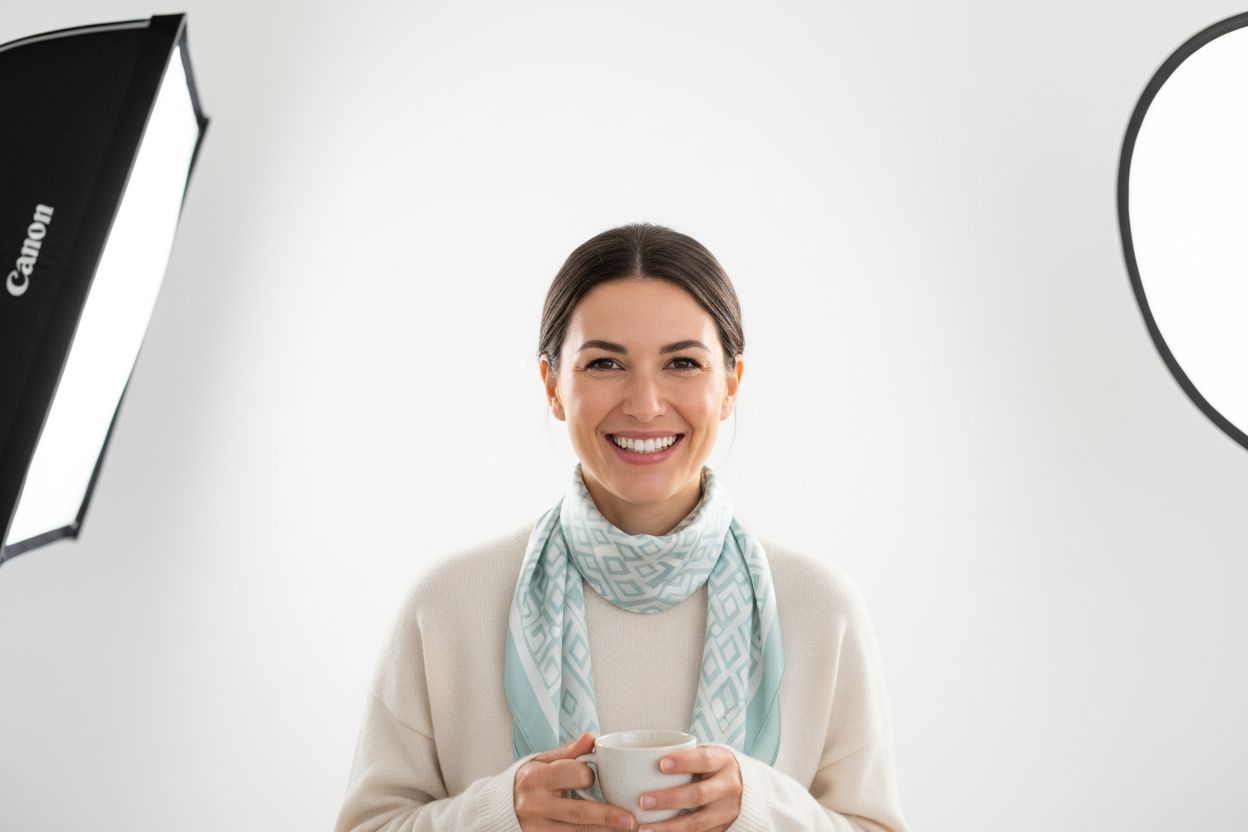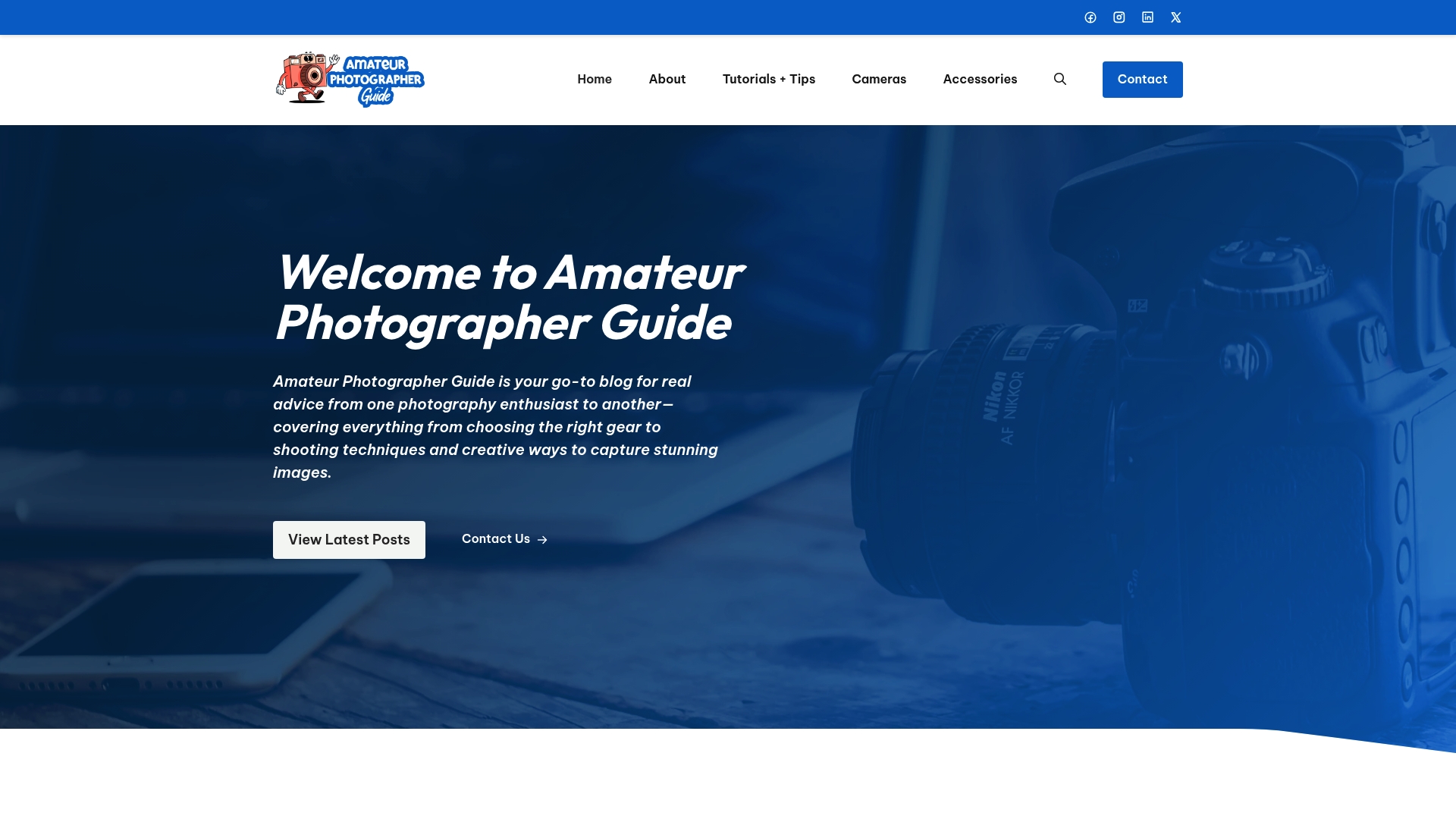Table of Contents
- Table of Contents
- Key Takeaways
- Defining High Key Photography Techniques
- Key Lighting Characteristics and Setup
- Creative Uses and Applications in Photography
- Essential Gear and Camera Settings Tips
- Common High Key Photography Mistakes to Avoid
- Master the Art of High Key Photography with Expert Guidance
- Frequently Asked Questions
- Recommended
This blog post may contain affiliate links. As an Amazon Associate I earn from qualifying purchases.
Bright, airy photos can lift a viewer’s mood in an instant, and high key photography uses light to make this magic happen. Studies show that images dominated by white and pastel tones often appear more positive and inviting to the eye. Learning how to use these glowing techniques not only elevates the style of your photos but also opens up new ways to express clarity, joy, and simplicity.
Table of Contents
- Defining High Key Photography Techniques
- Key Lighting Characteristics And Setup
- Creative Uses And Applications In Photography
- Essential Gear And Camera Settings Tips
- Common High Key Photography Mistakes To Avoid
Key Takeaways
| Point | Details |
|---|---|
| High Key Photography Technique | Utilizes minimal shadows and soft lighting to create bright, ethereal compositions. This style is ideal for conveying emotions like happiness and purity. |
| Lighting Setup Essentials | Employ a multi-light setup with a key light, fill light, and background light to achieve even illumination and control shadows effectively. |
| Camera Settings for High Key | Use a +1 to +2 EV exposure compensation, small apertures, and low ISO settings to enhance brightness while maintaining detail. |
| Common Mistakes to Avoid | Prevent overexposure and ensure proper background control, diffusion, and white balance to maintain image quality and consistency in high key photography. |
Defining High Key Photography Techniques
High key photography is a distinctive lighting technique that transforms ordinary images into bright, ethereal compositions with minimal shadows and soft, luminous qualities. Unlike traditional photography that relies on dramatic contrast, high key photography deliberately floods the scene with light, creating an almost dreamlike visual atmosphere.
The fundamental characteristic of high key photography is its approach to lighting. Photographers intentionally overexpose the image, reducing the lighting ratio and eliminating most shadow details. This technique typically involves using multiple light sources positioned to create an evenly illuminated subject, resulting in a clean, bright aesthetic that feels open and airy. By minimizing darker tones, high key images often convey emotions like happiness, purity, and simplicity.
To achieve high key results, photographers employ several strategic techniques. These include:
- Using bright white or light-colored backgrounds
- Positioning key lights to create soft, diffused illumination
- Overexposing images slightly to reduce shadow intensity
- Selecting subjects that complement a bright, clean aesthetic
While high key photography originated in studio settings, modern techniques allow photographers to create similar effects in various environments. Understanding how to use dynamic range can further enhance your ability to master this luminous photographic style.
Key Lighting Characteristics and Setup
The key to achieving stunning high key photography lies in understanding and implementing specific lighting characteristics that transform an ordinary scene into a luminous, soft-toned composition. Professional photographers use a strategic multi-light approach, carefully positioning lights to create an evenly illuminated environment with minimal shadows and maximum brightness.
A typical high key lighting setup involves three primary light sources: the key light, fill light, and background light. The key light serves as the primary illumination source, typically positioned at a 45-degree angle to the subject. The fill light, set at half the intensity of the key light, helps reduce harsh shadows and create a soft, even tone across the image. Meanwhile, the background light ensures the backdrop remains bright and uniform, eliminating any potential dark areas that could disrupt the ethereal aesthetic.
Here’s a comparison of the three primary lights in a typical high key photography setup:
| Light Source | Position/Intensity | Purpose |
|---|---|---|
| Key Light | 45° to subject Strongest light |
Main illumination Defines subject’s shape |
| Fill Light | Opposite key light Half intensity |
Softens shadows Balances exposure |
| Background Light | Behind subject Even intensity |
Brightens background Removes dark spots |
To execute a successful high key lighting technique, photographers must consider several critical factors:
- Maintain a lighting ratio where the key light is approximately twice as bright as the fill light
- Use diffusion materials like softboxes or umbrellas to soften light quality
- Select white or extremely light-colored backgrounds to enhance the bright atmosphere
- Adjust camera settings to slightly overexpose the image, preserving detail in lighter tones

For photographers looking to refine their studio techniques, learning about home photography lighting setup tips can provide additional insights into creating professional-quality high key images.
Creative Uses and Applications in Photography
High key photography transcends technical technique, emerging as a powerful visual storytelling method across diverse photographic genres. From commercial advertising to intimate personal portraits, this lighting approach offers photographers a unique way to communicate mood, emotion, and aesthetic sensibility through brilliantly illuminated compositions.
In commercial photography, high key techniques are particularly prevalent in industries seeking to convey positivity and cleanliness. Food, beauty, and lifestyle brands frequently leverage this style to create images that feel fresh, clean, and inviting. Fashion photographers also embrace high key lighting to highlight clothing textures and create ethereal, dream-like imagery that emphasizes model features without harsh shadows.
The versatility of high key photography extends across multiple specialized domains:
- Product Photography: Creates clean, minimalist product shots that draw full attention to item details
- Portrait Photography: Generates soft, flattering images that minimize skin imperfections
- Food Photography: Produces bright, appetizing images that make dishes look vibrant and appealing
- Corporate Headshots: Delivers professional, approachable images with uniform lighting
For photographers looking to expand their creative horizons, creative photography ideas can provide additional inspiration for experimenting with high key techniques across different subjects and styles.
Essential Gear and Camera Settings Tips
Successful high key photography requires a strategic approach to camera equipment and technical settings that go beyond standard shooting techniques. Professional photographers understand that achieving the perfect high key image demands precise control over lighting, exposure, and camera configuration.
The cornerstone of high key photography is selecting the right camera and lens combination. Modern DSLR and mirrorless cameras with manual settings provide the most flexibility, allowing photographers to fine-tune exposure compensation and ISO levels. Typically, low ISO settings between 100-400 work best, helping minimize digital noise while maintaining the bright, clean aesthetic characteristic of high key images. Pairing your camera with a versatile lens that offers sharp detail and minimal distortion will further enhance your high key results.

Key camera settings for high key photography include:
- Set exposure compensation between +1 to +2 EV to create bright, well-illuminated images
- Choose a small aperture (f/8 to f/16) for maximum depth of field and precise light control
- Utilize manual mode for complete control over camera settings
- Use a tripod to maintain consistent framing and eliminate camera shake
- Select a white balance preset that complements your lighting setup
For photographers looking to dive deeper into camera techniques, the beginner’s guide to camera settings can provide additional insights into mastering your equipment for high key photography.
Common High Key Photography Mistakes to Avoid
High key photography might seem straightforward, but numerous subtle pitfalls can transform a potentially stunning image into a disappointing result. Understanding these common mistakes is crucial for photographers seeking to master the delicate art of creating bright, luminous compositions that maintain detail and aesthetic appeal.
One of the most prevalent errors is mismanaging exposure, which can quickly derail a high key shoot. Photographers often overcorrect, pushing exposure compensation so far that images become completely blown out, losing critical texture and detail. The goal is to create a bright image with soft, controlled highlights, not an indistinguishable white canvas. Similarly, neglecting background control can sabotage your high key efforts, with uneven lighting or inappropriate background colors disrupting the clean, uniform look essential to this technique.
Key mistakes to watch out for include:
- Overexposing images to the point of losing all shadow detail
- Failing to use diffusion materials to soften harsh lighting
- Selecting backgrounds that compete with or distract from the subject
- Ignoring white balance settings that can introduce unwanted color casts
- Neglecting to use a light meter for precise exposure measurement
For photographers looking to refine their technical skills, common photography mistakes to avoid can provide additional insights into improving overall image quality and avoiding potential high key pitfalls.
Master the Art of High Key Photography with Expert Guidance
High key photography can seem challenging with its demand for perfect lighting balance and careful exposure control. If you find yourself struggling to avoid overexposure or unsure which camera settings work best to create those clean, luminous images, you are not alone. Achieving that soft, glowing effect requires understanding key techniques and the right gear, like managing your exposure compensation, using diffusion light sources, and selecting the ideal background.

Unlock your potential by exploring practical tutorials and in-depth advice on how to use dynamic range in your images and suiting your setup with home photography lighting expert tips. Immediate access to these resources and more can be found at Amateur Photographer Guide where you will find everything needed to improve your high key photography skills today. Start mastering your light now and turn your visions into breathtaking photos.
Frequently Asked Questions
What is high key photography?
High key photography is a lighting technique that creates brightly illuminated images with minimal shadows and soft, luminous qualities, often conveying emotions like happiness and simplicity.
How do I achieve high key photography?
To achieve high key photography, use bright backgrounds, position multiple light sources for even illumination, slightly overexpose your images, and select subjects that complement the bright aesthetic.
What equipment is best for high key photography?
Using a DSLR or mirrorless camera with manual settings is ideal. It’s important to pair it with a versatile lens and utilize a low ISO setting (between 100-400) for the best results in high key photography.
What are common mistakes to avoid in high key photography?
Common mistakes include overexposing images that lose detail, failing to use diffusion materials for soft lighting, selecting distracting backgrounds, neglecting white balance, and not using a light meter for accurate exposure measurement.
Recommended
- How to use Dynamic Range in your images – Amateur Photographer Guide
- Camera Hacks I Learned After Shooting 10,000+ Photos [Pro Secrets] – Amateur Photographer Guide
- 7 Essential Photo Editing Tips for Amateur Photographers – Amateur Photographer Guide
- The Basics Ideas Of Photography – Amateur Photographer Guide
- What is High-Detail Portraiture? Understanding Its Artistry – The Family Portrait Companys

